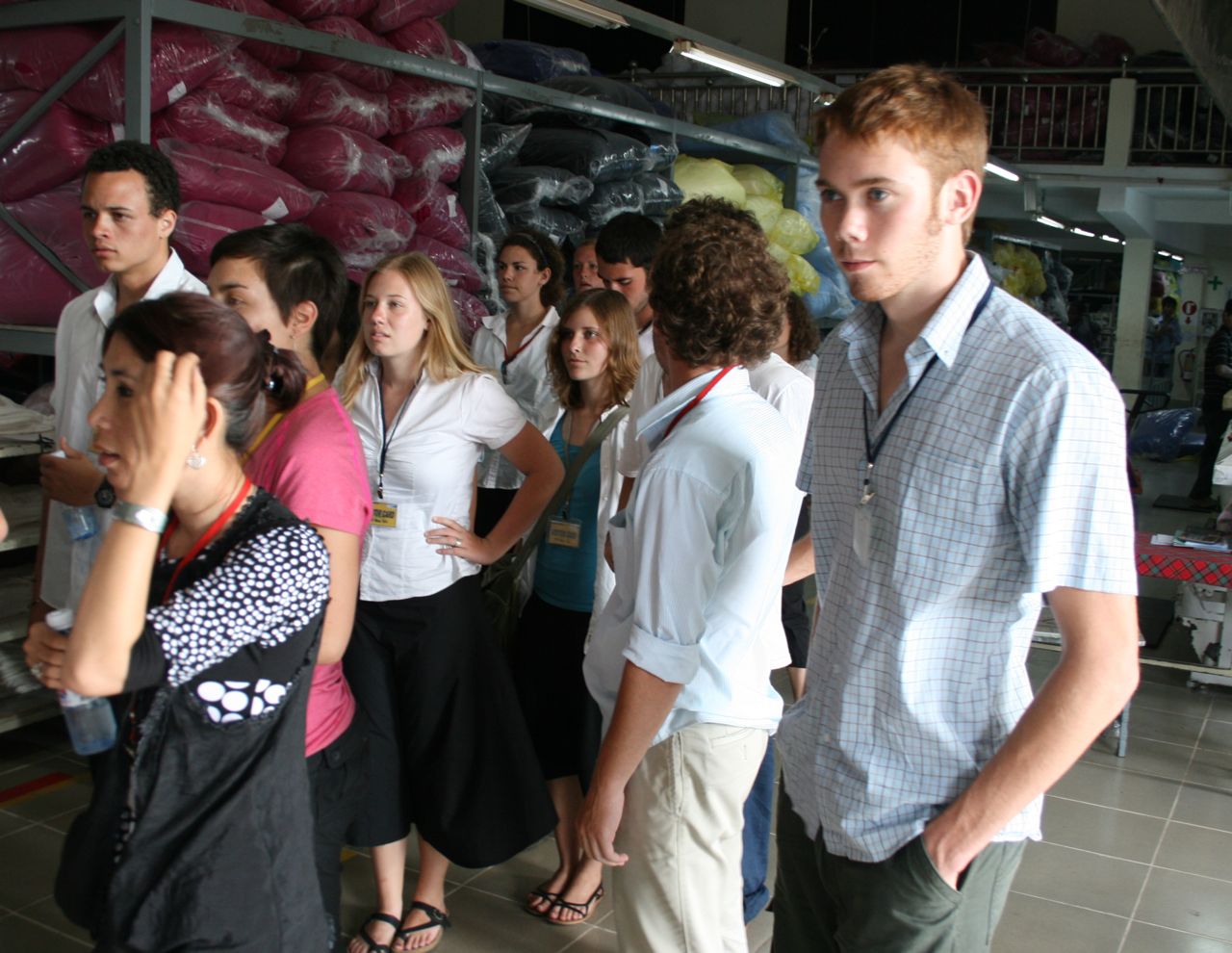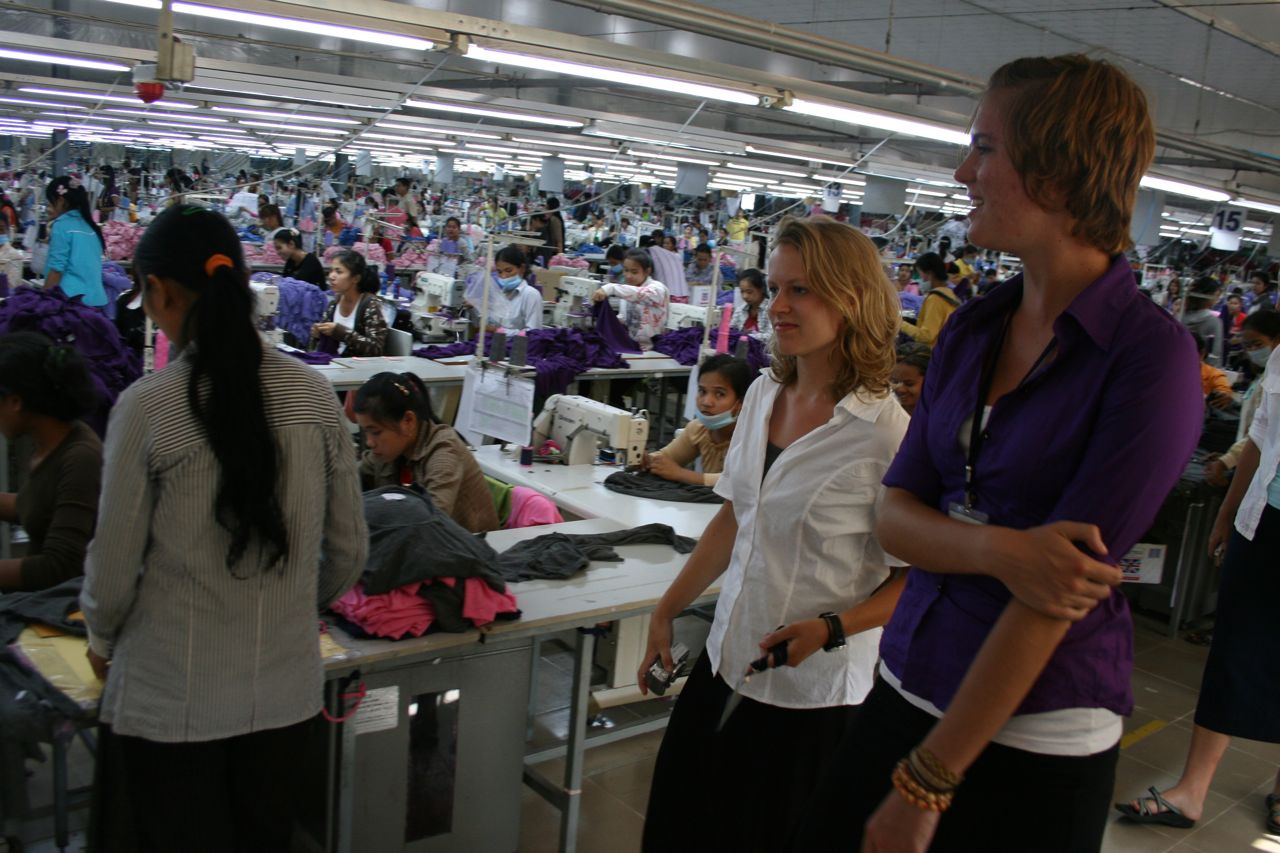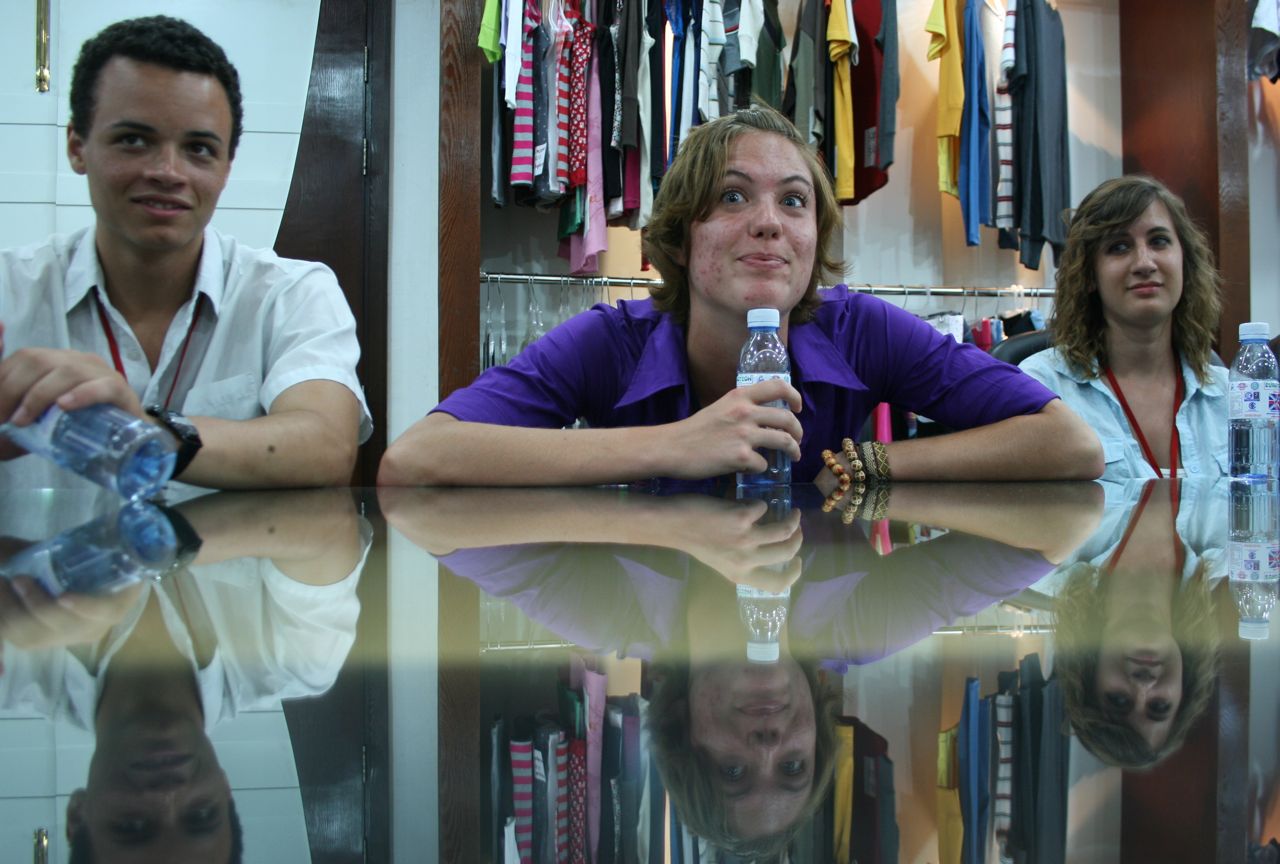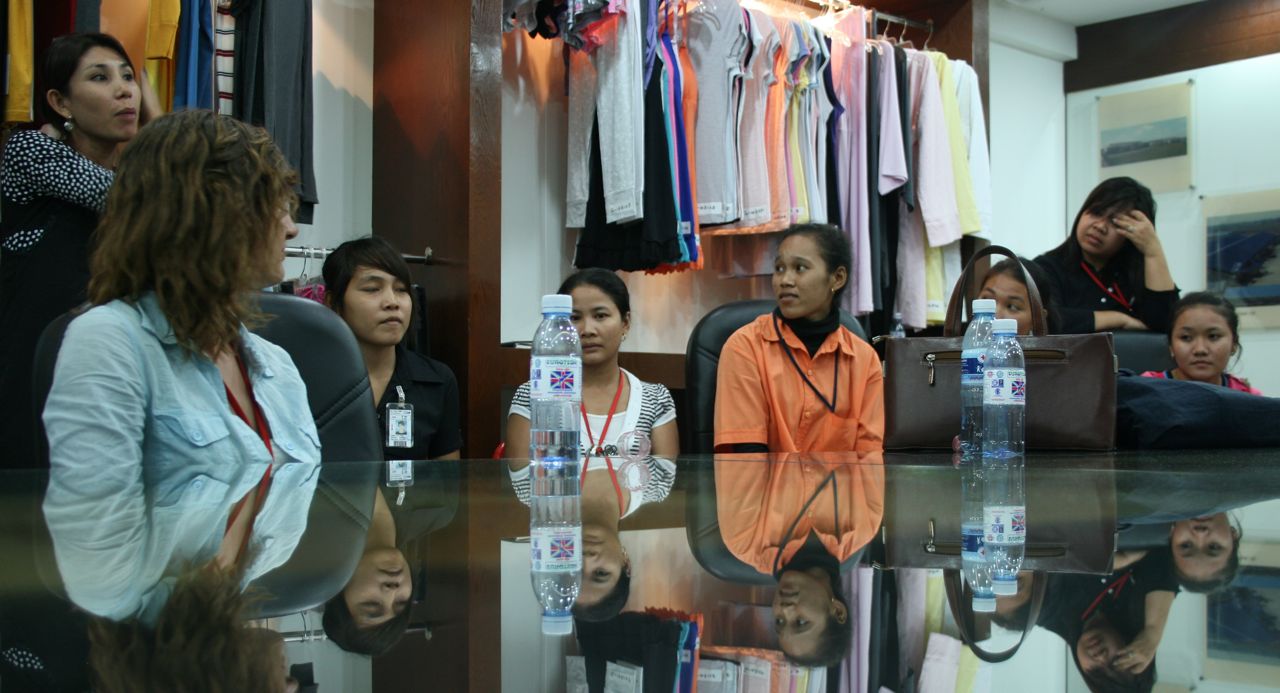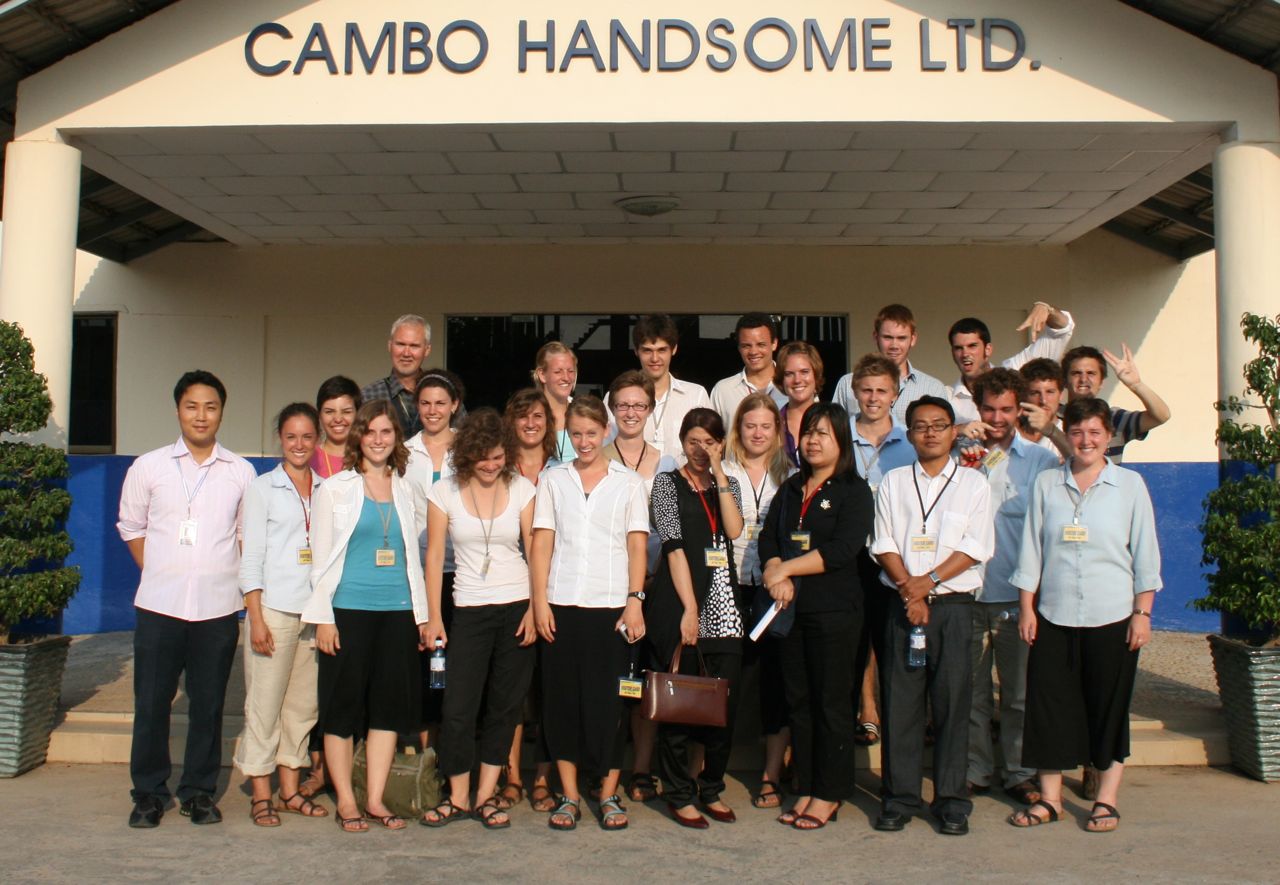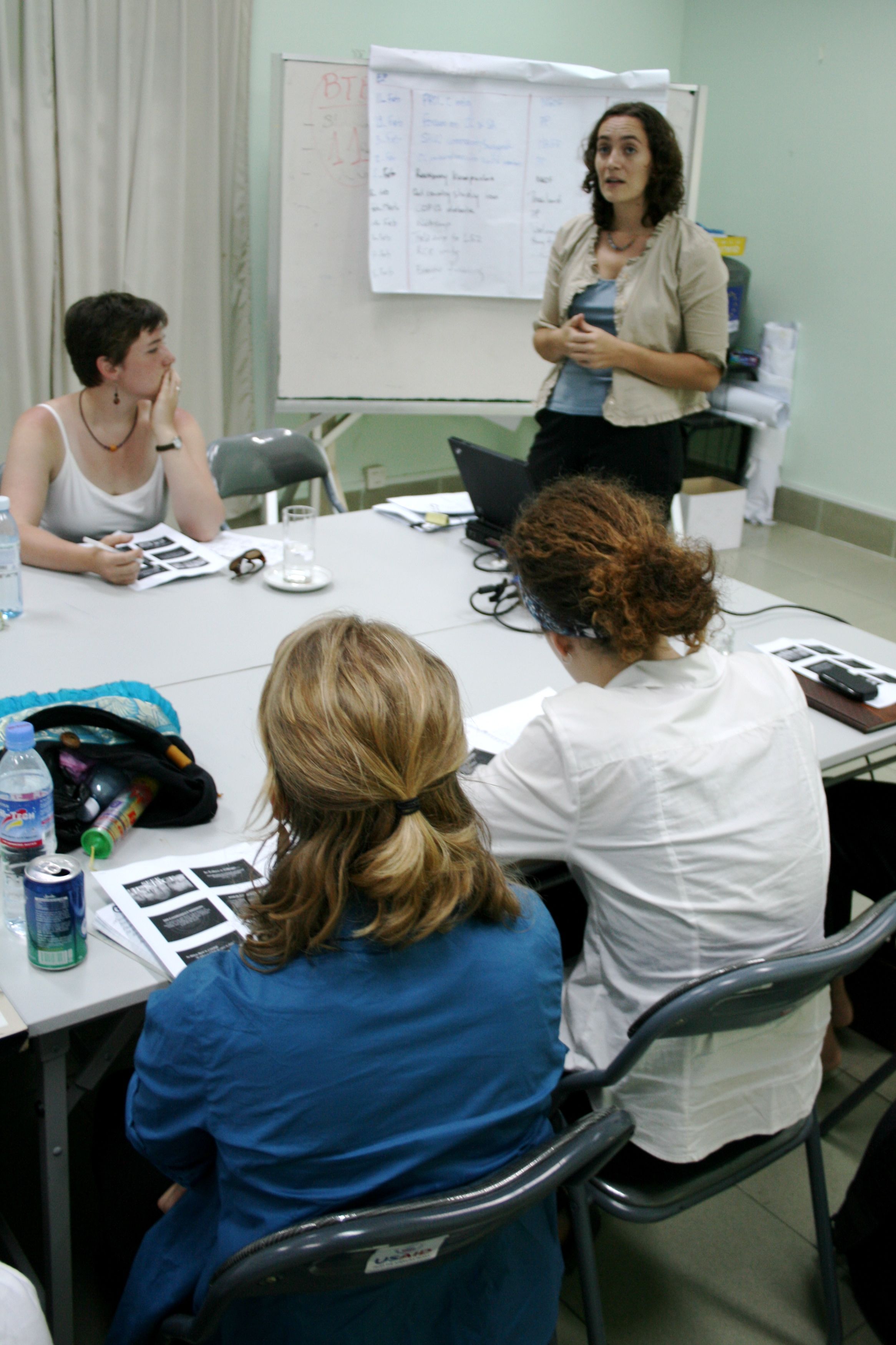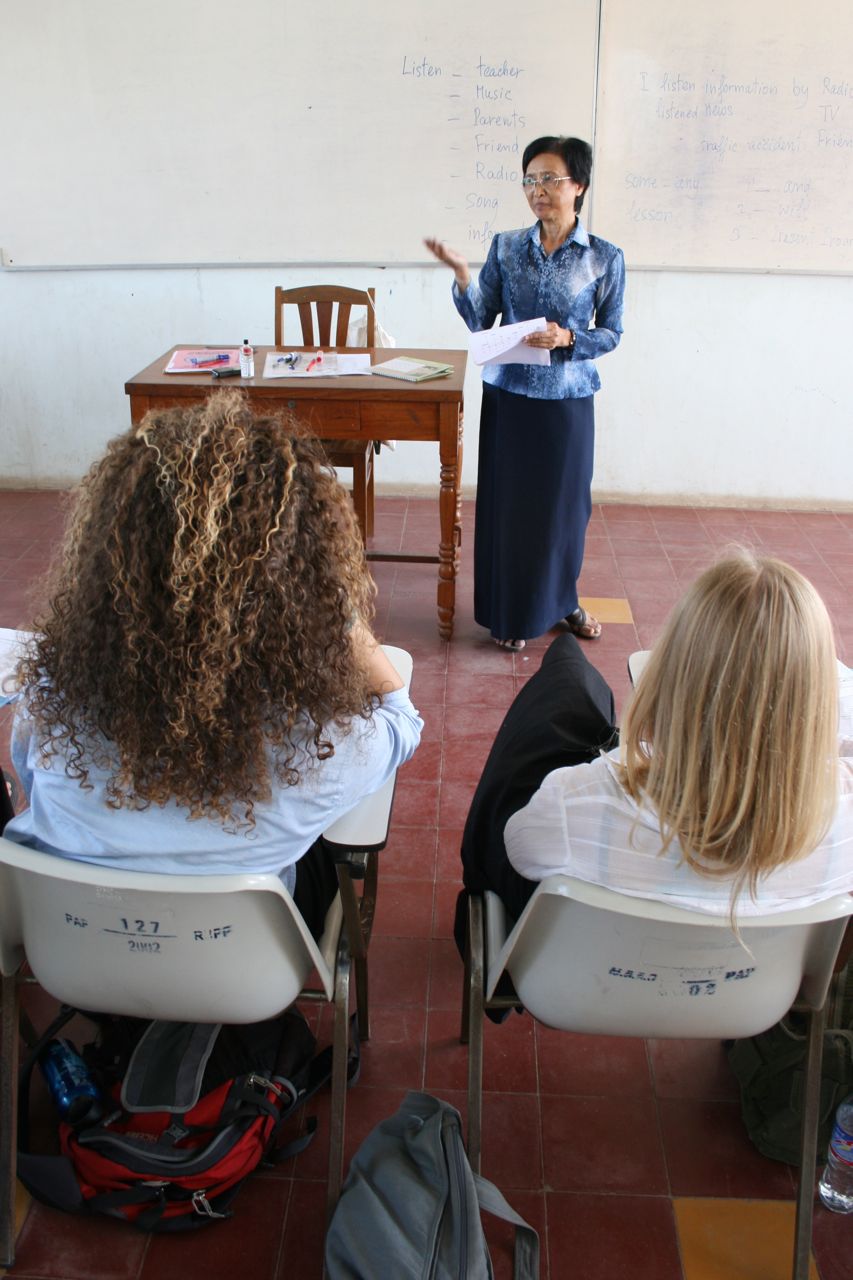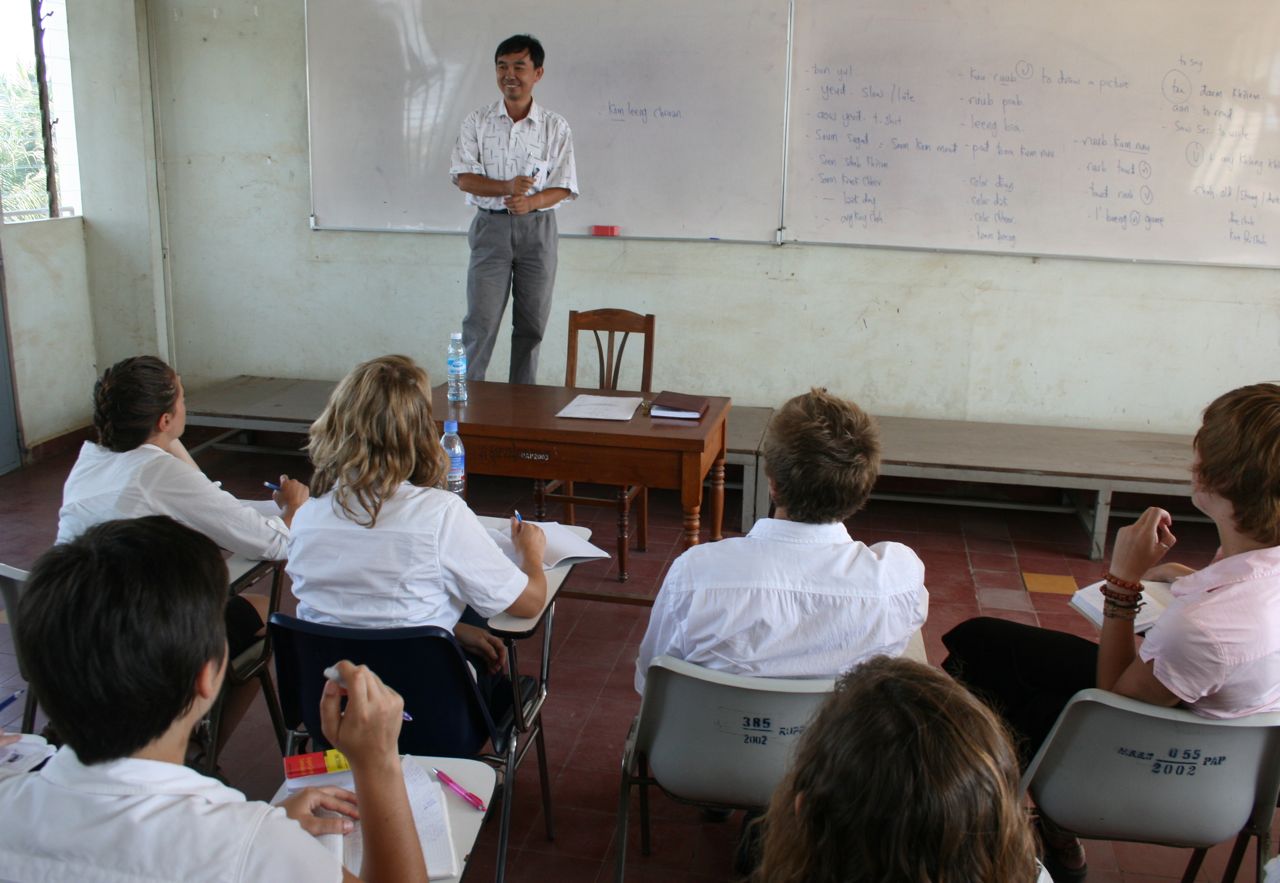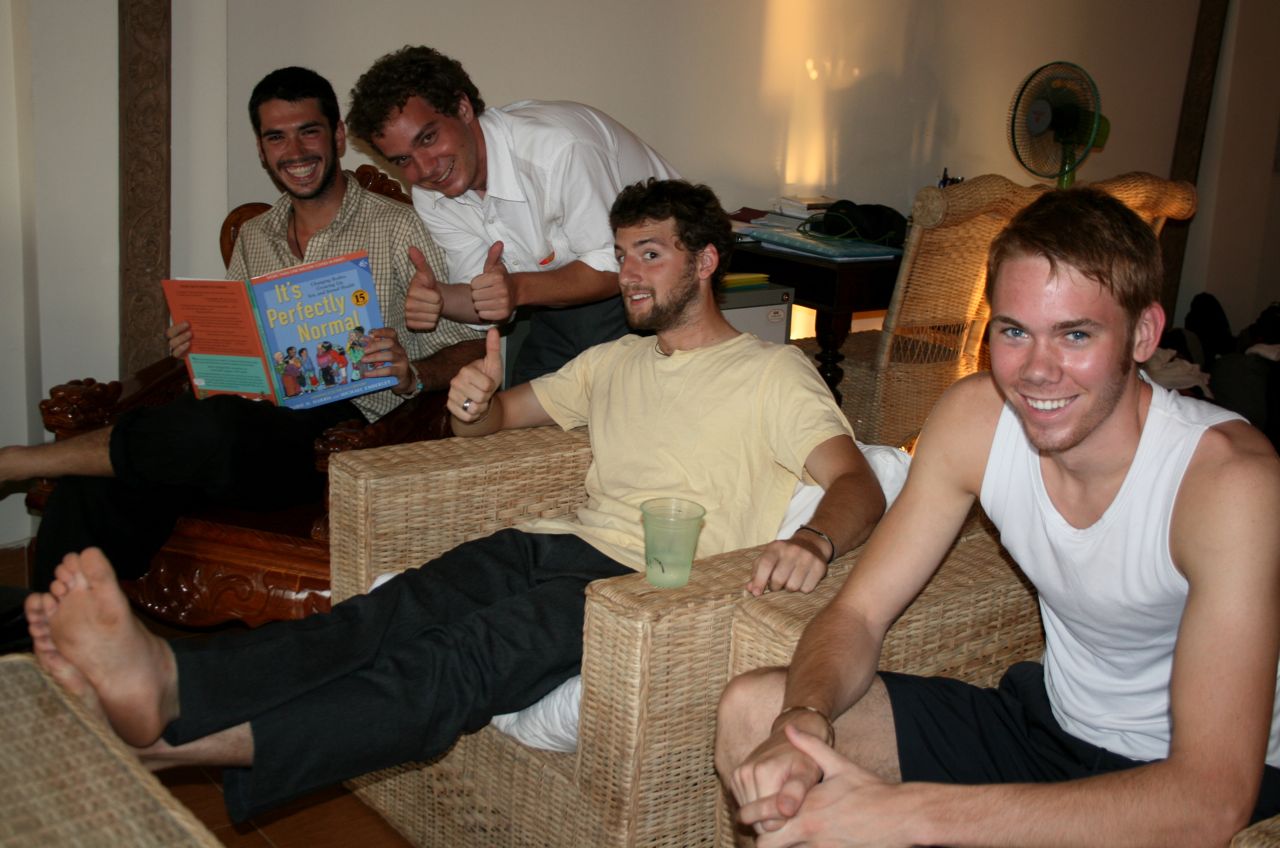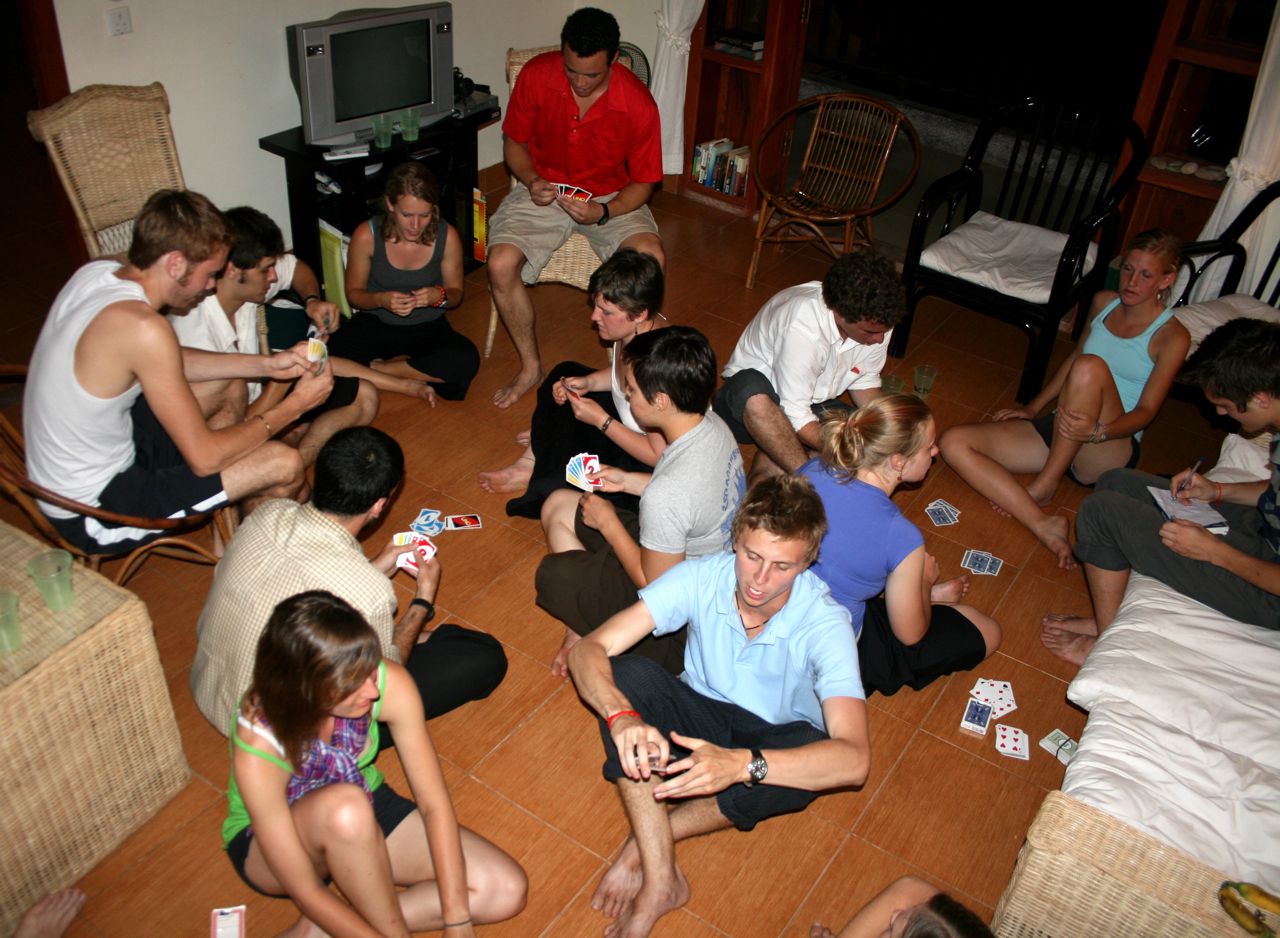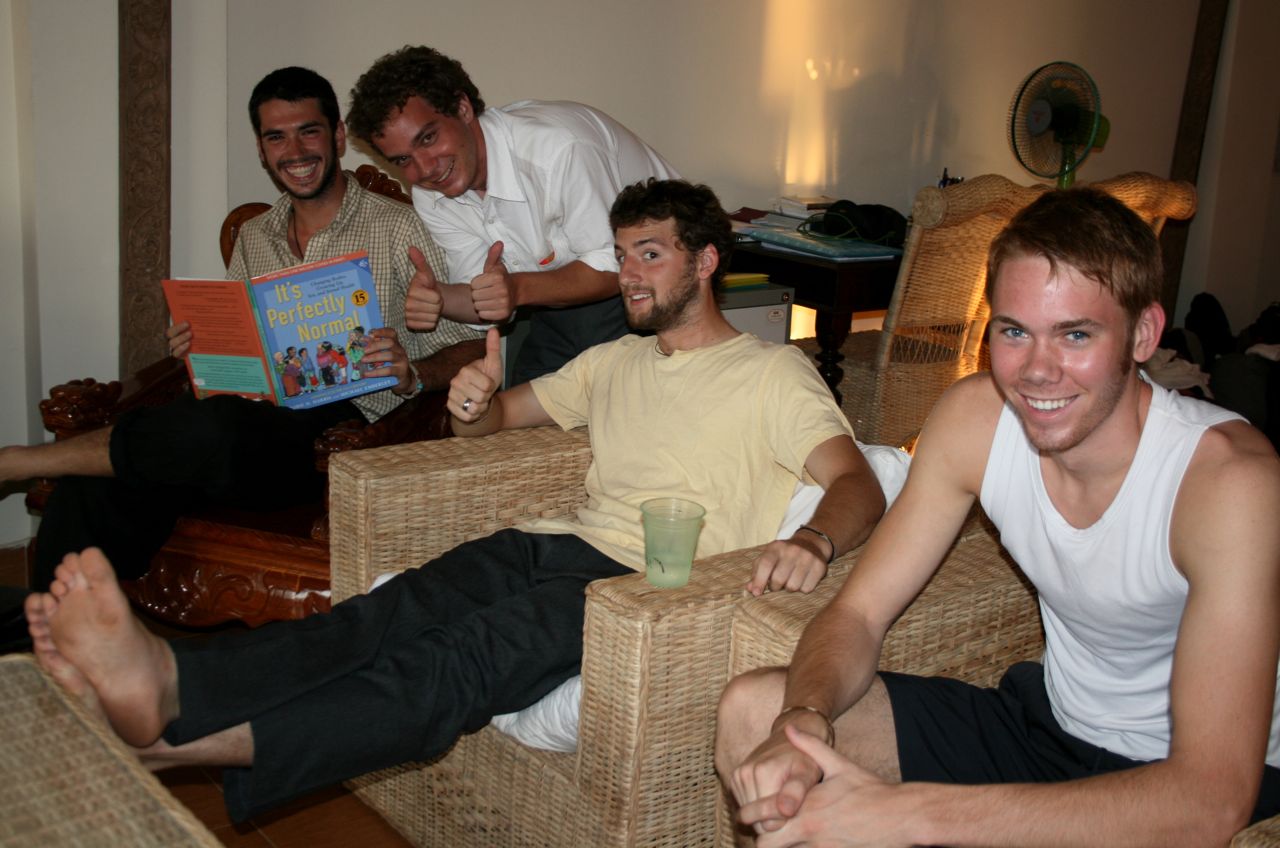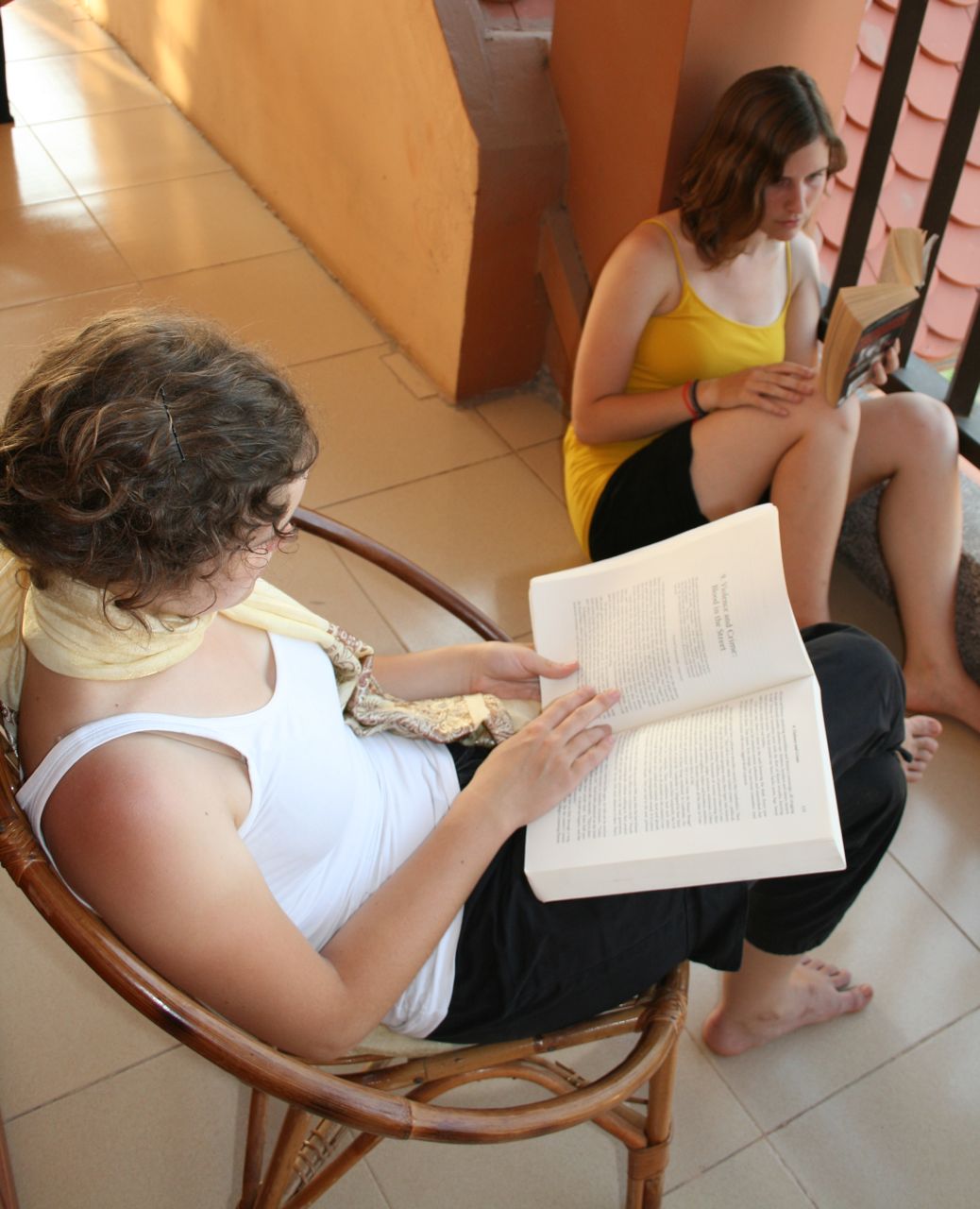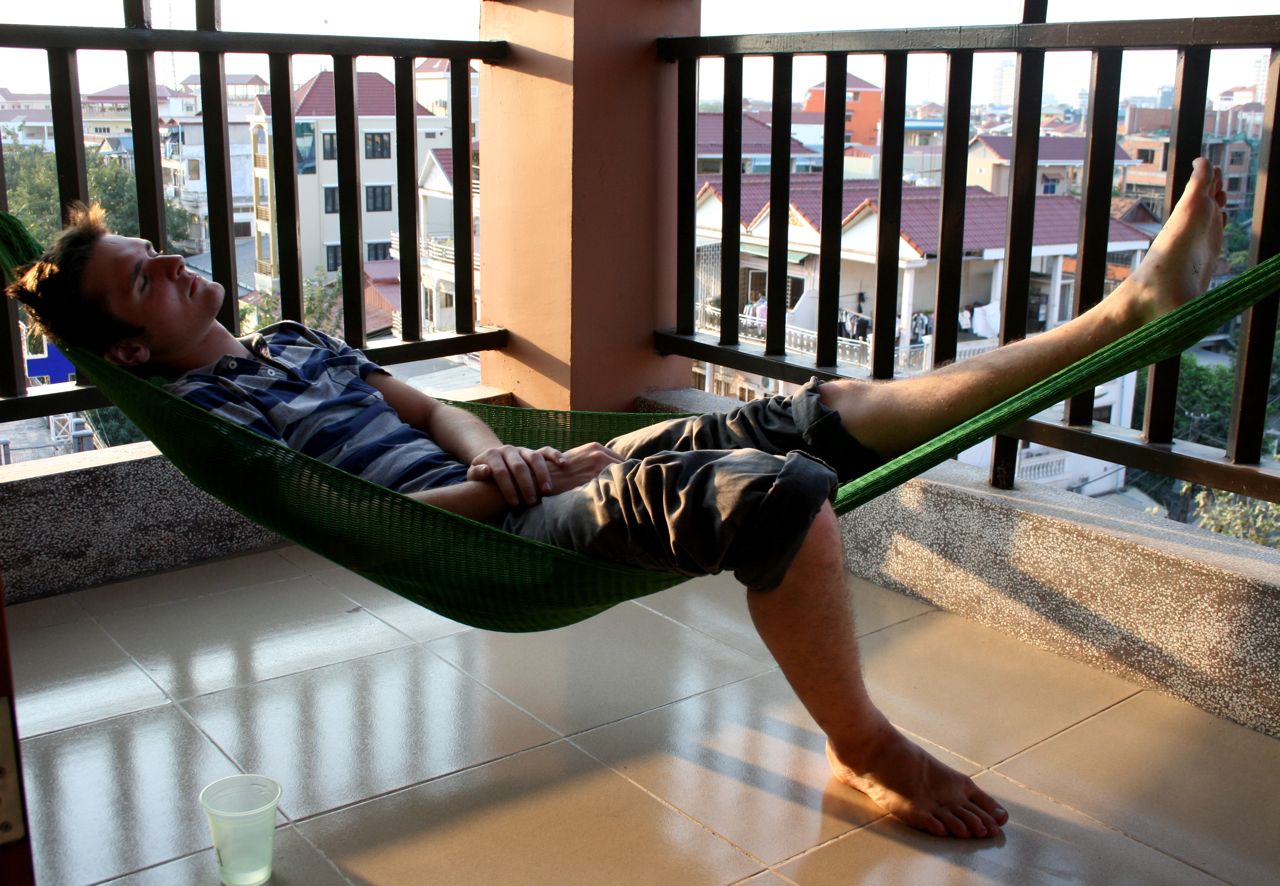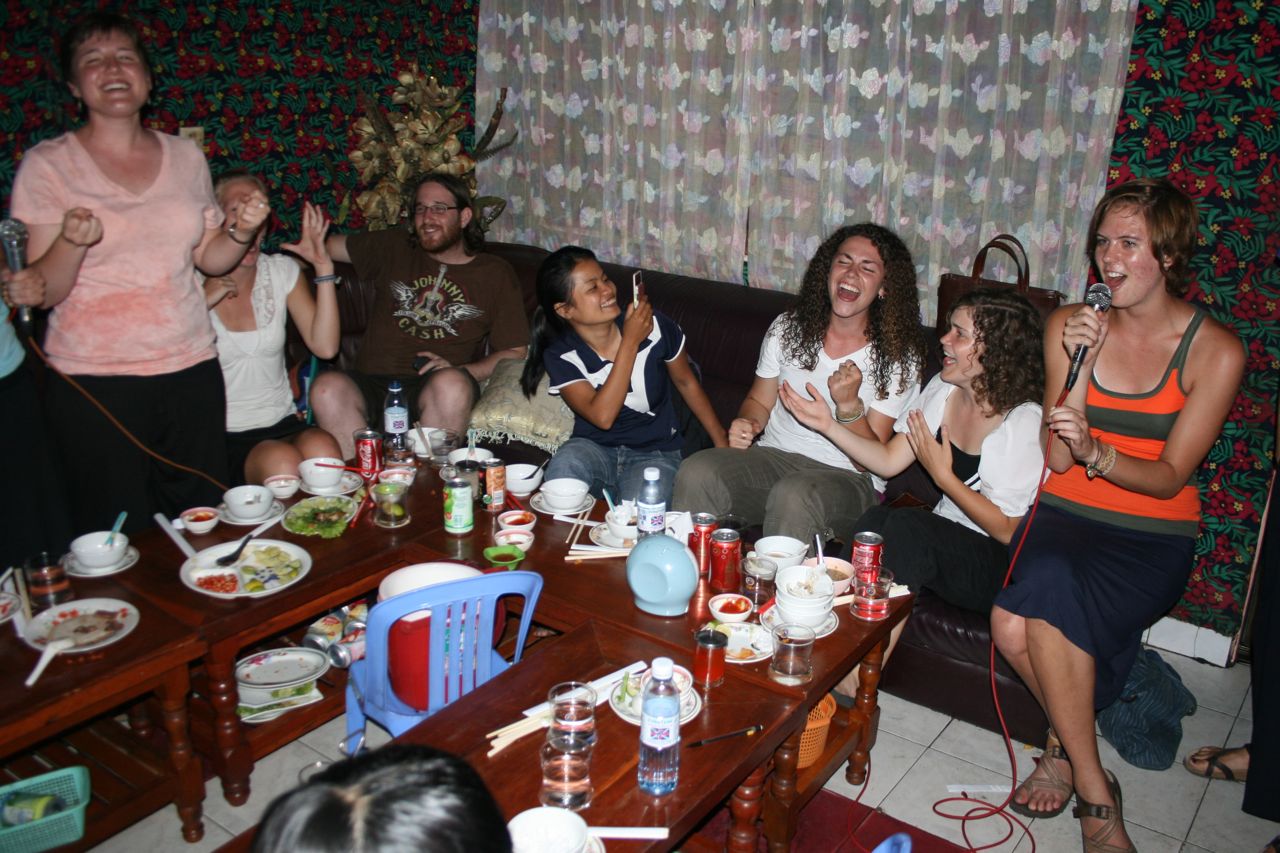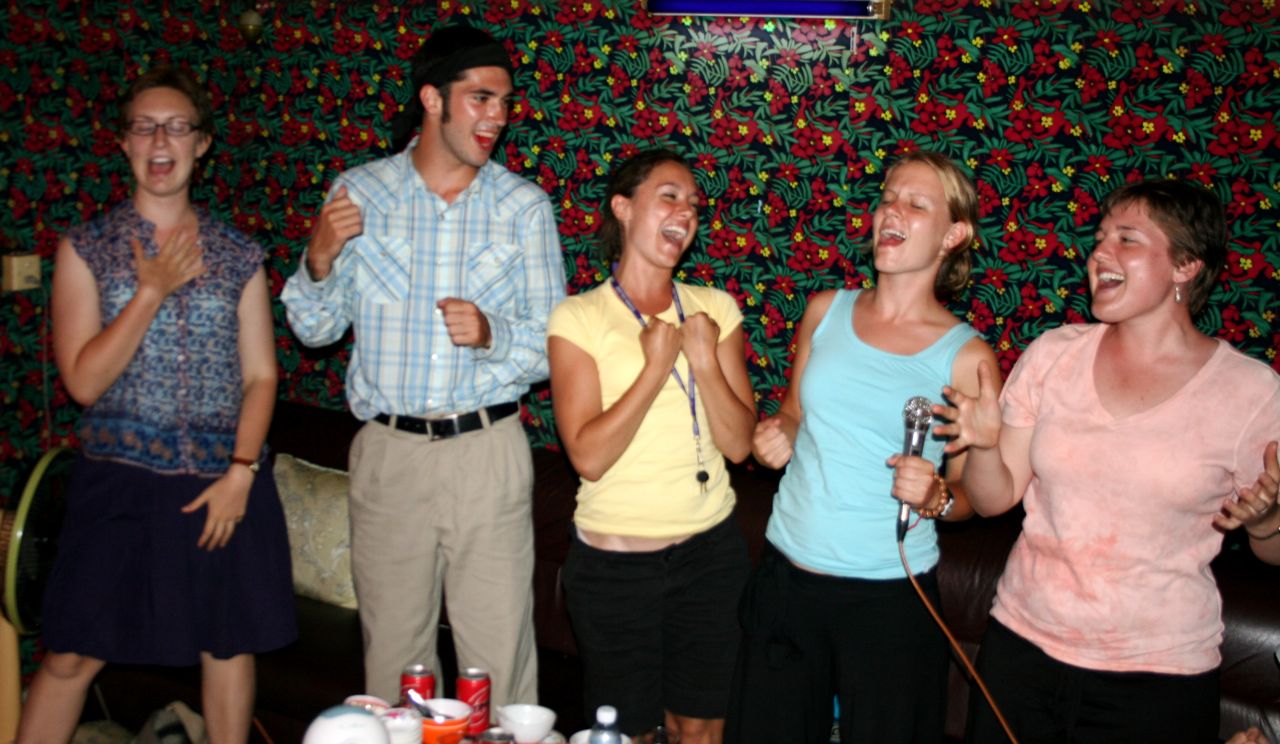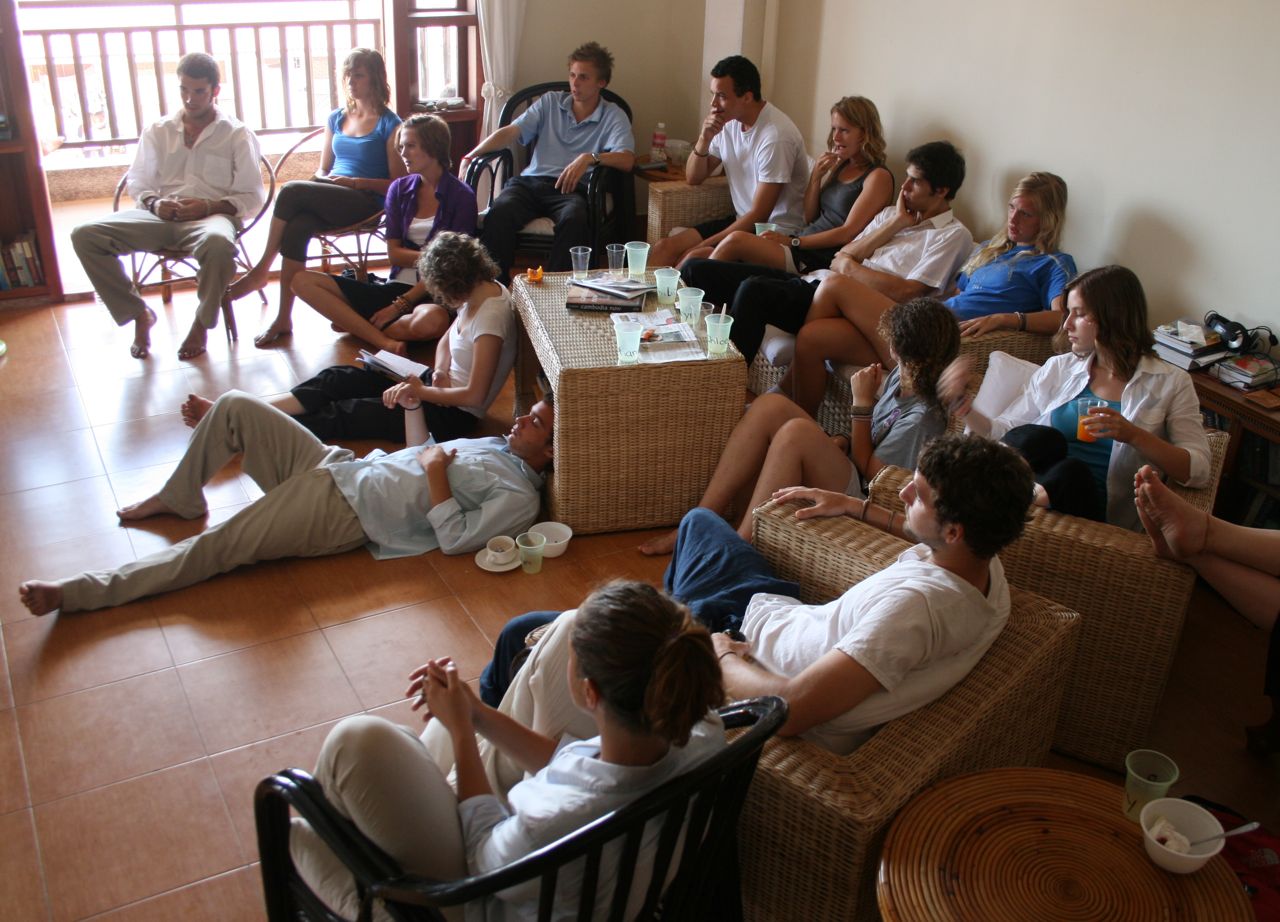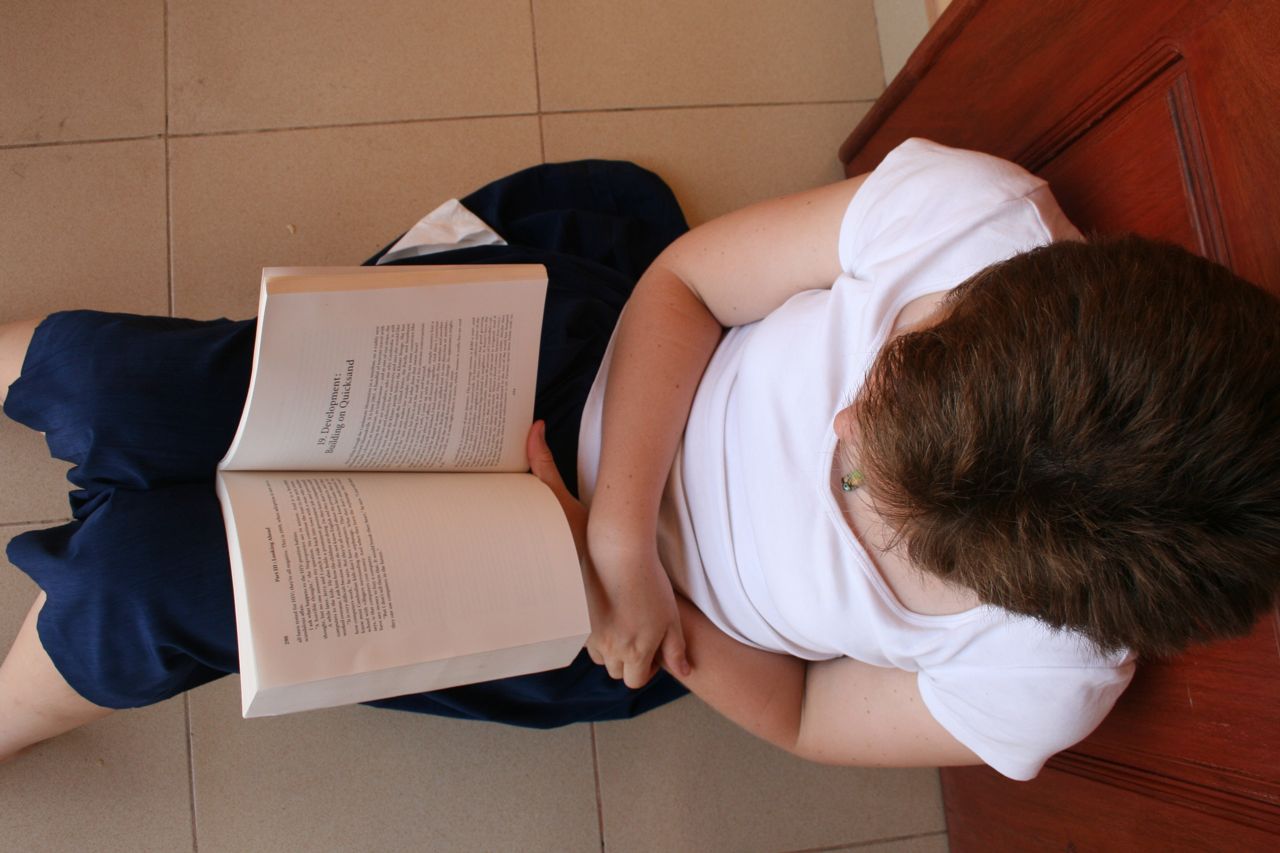Textile Factory Field Trip
Monday afternoon we heard about the textile industry from Anne Ziebarth, a legal consultant for Better Factories Cambodia, an organization that monitors working conditions for textile factories that export their goods to the U.S. and elsewhere. Between 80 and 90 percent of the clothing made in Cambodia is sent to the U.S., and sold at stores such as Gap, J.C. Penny, Victoria’s Secret, Saint John’s Bay, Wal-Mart, Abercrombie and Fitch, and elsewhere.
After hearing Ms. Ziebarth’s lecture, we were able to go to Cambo Handsome, a textile factory on the outskirts of Phnom Penh, and the provider of thousands of garments each year to all of the stores mentioned above. Cambo Handsome is part of the Korean-owned Hansoll Textile Company, and one of about 250 clothing-exporting factories in Cambodia. Cambodia’s factories were hard-hit by the global economic crisis, with many clothing sellers shifting allegiances to the cheaper and less-monitored markets of Bangladesh. About 280,000 Cambodians, most of them women, work in Cambodia’s clothing industry, and they collectively provide income for about 1.7 million people in Cambodia — about one seventh of the population.
Working conditions are relatively impressive at Cambodia’s export clothing factories, although wages are exceedingly low by U.S. standards — about $93 a month, including overtime, for 60-hour work weeks. At 240 hours a month, that comes to about 39 cents per hour. But Cambodia’s textile export factories are not sweat shops, thanks partly to the monitoring of Better Factories Cambodia. Several students said the U.S. factories they worked in last summer were much more dirty, dangerous, and hot than the Cambodian one we visited. Overall, said Ms. Ziebarth, “If you see that Cambodia label on your clothing, you can feel good about it.” Better Factories Cambodia monitors compliance with national Cambodian laws and international, fundamental human rights (e.g., no forced labor, no discrimination, no child labor, no control of unions).
Factory managers also allowed us to talk with five factory workers — women ranging in age from 17 to 30 — whose jobs were either cutting, sewing, or ironing. We asked about whether the money they earn is a living wage (no, they said); whether the working conditions at this factory were better than the ones they worked in previously (yes, they said); whether they wear any of the clothes they make (no); and what hopes and aspirations they have (to have a small street shop selling groceries, a tailoring shop, or to return to the provinces and raise rice and animals). It was an eye-opening field trip.
In the latter part of last week’s academic schedule, we heard from Lisa Slavovsky about “Sex Trafficking and Sexual Exploitation in Cambodia,” and from Adel O’Regan about “HIV/AIDS in Cambodia.” Prostitution and sexual exploitation are quite evident in Cambodia, as students have discovered in their visits to Phnom Penh and Siem Reap eateries. About 70 percent of young Cambodian men, said Slavovsky, have their first sexual experience with a prostitute, and visiting brothels has become “normalized” as part of life for adult men. Although sex tourism is rampant in Cambodia as well, organizations have sprung up to protect young boys and girls from sexual exploitation.
Our morning Khmer classes continued as usual, with students drastically improving their language skills since the beginning of the term. Teachers Meng and Pantha are pictured here.
At P’teah Goshen Night last week, students relaxed, played cards, and heard an opening meditation from Corinne. On Thursday night a preponderance of us met at Sovanna Steakhouse for Group Karaoke Night, joined by our local coordinator Marya, one of her friends, and Chloe’s sister. It was an ear-blowing night of singing both Khmer and Western songs, packed into a 14-by-14 room where we also dined.
Students were back at the Graber Miller apartment at 6:45 a.m. Monday to watch the Super Bowl, that odd American ritual event. Although all of the students came to the apartment, some were less interested in the game itself, but they enjoyed the chance to relax and have bacon and a cereal buffet.
Service assignments have solidified, so all students now know where they’ll be going out in the provinces. More on that in future blogs.
